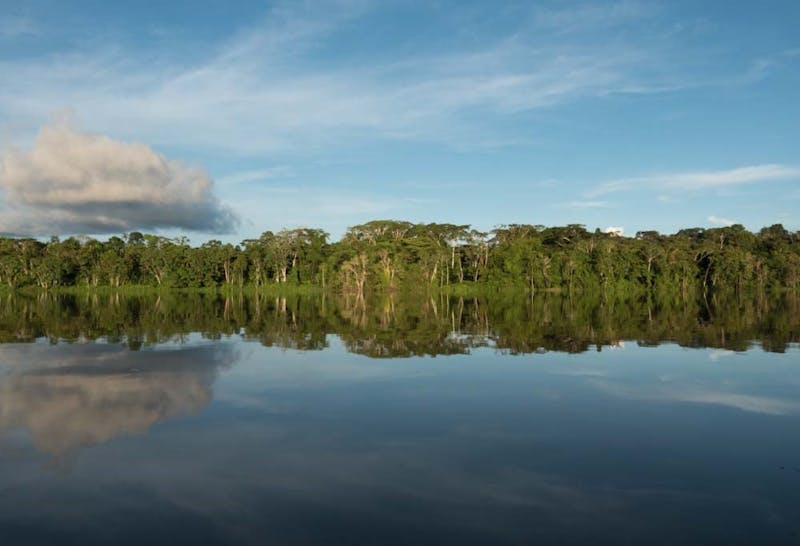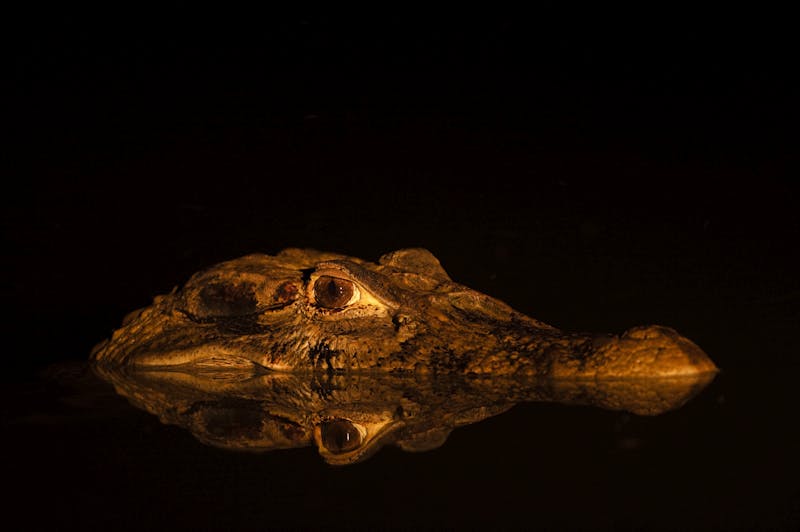For years, two communities in the Curare-Los Ingleses Indigenous Reserve in southeast Colombia have worked to protect the black caiman — the largest predator in the Amazon River basin, which was hunted to near extinction in the area for its highly-prized skin.
Now, with support from a Conservation International partnership that combined scientific measures with traditional Indigenous knowledge, the Borikada and Curare communities are seeing this culturally and ecologically important species rebound, Astrid Arellano reported for Mongabay.
The black caiman is sacred to the Indigenous peoples of Colombia’s lower Caquetá River, who believe it descended from a man and now rules over the waters and fish.
Stretching up to 7 meters (23 feet) in length, it’s the largest member of the alligator family — an apex predator whose dark skin absorbs heat by day and provides camouflage during nocturnal hunts.
But the reptile’s hide also made it vulnerable. Decades ago, as demand for alligator leather grew, black caimans became an easy target for hunters due to their large size.
“Between the 1970s and early 1980s in that area of Colombia [near the reserve], there was a huge problem with caiman hunting,” Jack Hernández, a biologist and Conservation International consultant, told Mongabay. “They have always been highly sought after for their skin and meat, not just by local people but also by outsiders, non-Indigenous people or for foreign trade.”
Caquetá River. © Simon De Man
In 2008, when the Borikada and Curare communities began to notice the caiman’s dwindling numbers, they banded together to reverse the trend.
“At this time … the reserve began to look for a solution to the indiscriminate hunting and overexploitation and asked for support from Conservation International,” Hernández told Mongabay. “That is when the community conservation watch program was born.”
With funding from Conservation International, a lookout cabin was built near the lakes of Puerto Caimán, where families who live on the reserve can stay and take turns monitoring the black caiman — carrying out surveillance patrols while also getting paid for their time.
Last year — the culmination of 14 years of work — the communities led the first-ever survey of the species, counting 123 black caimans.
Before conducting the survey, Conservation International, the communities’ elders and local people working on the project — referred to as co-researchers — participated in a knowledge exchange, where they learned both about the communities’ goals for the survey and the scientific approach to monitoring, including counting and measuring species.
“Our goal was to share knowledge, and they could tell us what they know about the caiman,” Hernández told Mongabay. “They know a lot about the species, especially those who live in the reserve, because they have lived alongside them all their lives.”
The surveys were conducted at night with three co-researchers packed into a small wooden canoe on a system of blackwater lakes. Each researcher had a job: steer the boat, illuminate the shore with a long-range flashlight and record data, such as the caiman’s size.
According to Hernández, the large caimans were calm, and allowed researchers to approach them — juveniles could even be picked up and measured, Arellano writes for Mongabay.
Black caiman. © Pete Oxford
Caimans play an important role in the delicate balance of the Amazon River basin. They eat everything from very small animals to deer, helping to keep species populations in check — and the ecosystem healthy. Even their excrement plays a role in the region’s ecology. It’s a vital part of the food chain, particularly for zooplankton and phytoplankton, which in turn, are an important food source for fish hatchlings. As a result, declining caiman numbers have been linked to declining fish populations.
According to the International Union for Conservation of Nature, without conservation efforts — like those being carried out in the Curare-Los Ingleses Indigenous Reserve — the black caiman is at risk of becoming endangered again.
Caimans are just the beginning of the communities’ ambitions to protect native fauna. Currently, they are working to protect native species like the Arrau turtle and pirarucu fish, both of which are at risk due to habitat loss and overfishing.
The communities “are receiving training in participatory wildlife monitoring,” Hernández told Mongabay. “This means that the entire community is trained, so that everyone has the necessary skills to conduct the monitoring.”
Read the full story here.
Further reading:
Mary Kate McCoy is a staff writer at Conservation International. Want to read more stories like this? Sign up for email updates. Also, please consider supporting our critical work.



